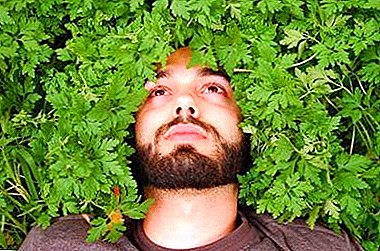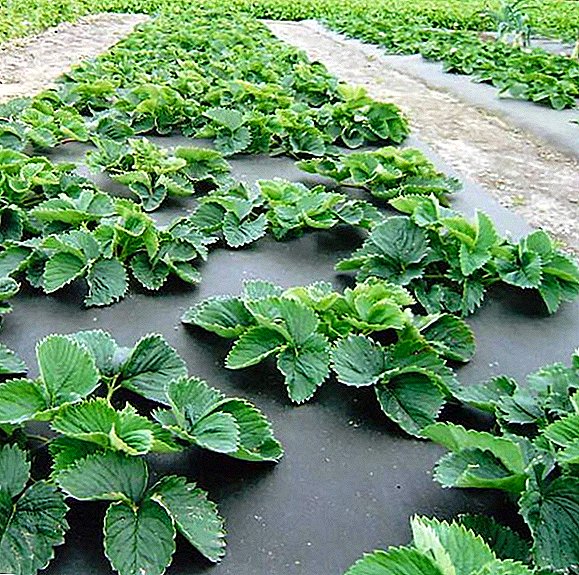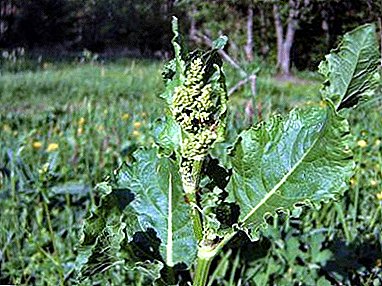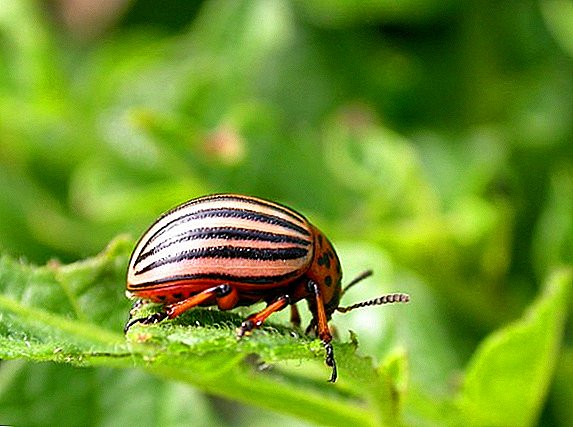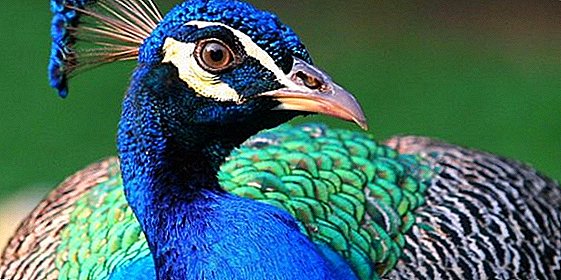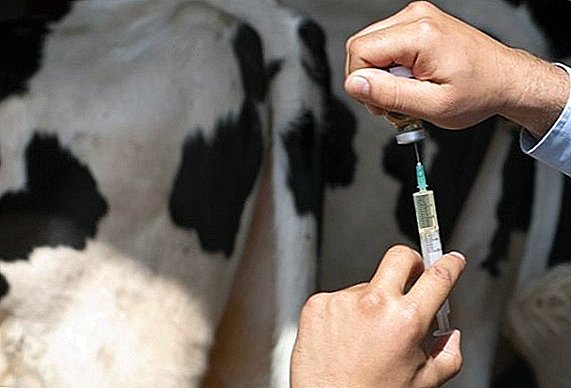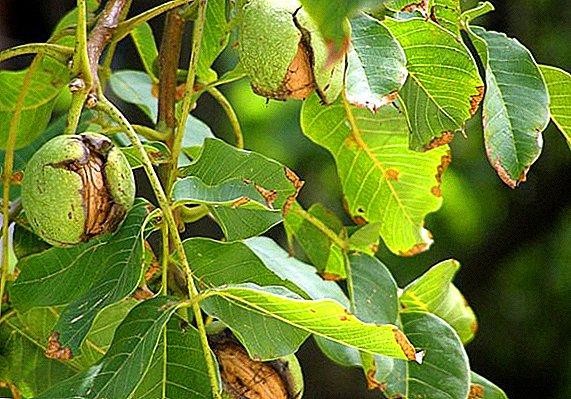 Walnut - widely distributed in the suburban areas. Its fruits are high in calories and healthy. Almost all parts of the tree - leaves, roots, bark - due to the content of vitamins and minerals have healing properties. Used in traditional and traditional medicine, cosmetology. Walnut and peanut butter are frequent guests at the kitchen tables in various dishes. Unfortunately, this plant does not have a strong immunity to all sorts of diseases and parasites, which lead to damage of fruits, make them unsuitable for consumption. Although the nut is affected by illnesses much less frequently than other fruit trees. We will introduce you to the most common diseases of walnut, dangerous pests and ways to combat them.
Walnut - widely distributed in the suburban areas. Its fruits are high in calories and healthy. Almost all parts of the tree - leaves, roots, bark - due to the content of vitamins and minerals have healing properties. Used in traditional and traditional medicine, cosmetology. Walnut and peanut butter are frequent guests at the kitchen tables in various dishes. Unfortunately, this plant does not have a strong immunity to all sorts of diseases and parasites, which lead to damage of fruits, make them unsuitable for consumption. Although the nut is affected by illnesses much less frequently than other fruit trees. We will introduce you to the most common diseases of walnut, dangerous pests and ways to combat them.
Did you know? Walnut is also called Volosh, Greek, royal, sometimes mahogany.
Methods for dealing with walnut disease
The main reasons for which the Volosh nut can get sick are:
 errors in farming;
errors in farming;- improper soil composition;
- lack of light;
- excessive soil moisture;
- close bedding of groundwater;
- pest damage.
In order to detect walnut diseases in time and start their treatment, it is necessary to inspect the tree more often for changes in appearance. As a rule, the first signs of the disease are manifested in the form of various kinds of spots on the leaves and shoots.
And in order to avoid ailments, it is important to carry out spring preventive spraying, sanitary pruning, cleaning of fallen leaves and fruits. You need to know how to spray a nut in the spring for the prevention of various diseases.
Bacteriosis
Favorable conditions for the development of bacteriosis on walnuts appear in warm and damp spring weather. The disease manifests itself as dark spots on the leaves, shoots, fruits, flowers. The greatest damage is capable of inflicting during flowering, destroying most of the flowers. If bacteriosis develops after flowering, then in such trees the wood becomes brown, and the young shoots die off. Fruits are covered with dark spots.
Control measures. To prevent bacteriosis, walnut should be processed in the spring before flowering with a 3% Bordeaux mixture. Repeated spraying should be done two weeks after flowering.
Important! In order to have a greater effect in the Bordeaux treatment, a 0.3% urea solution can be added to it.
Bacterial burn
 One of the most serious diseases of walnut is a bacterial burn. It affects leaves, flowers, shoots and fruits. It is this disease that is the reason why the walnut leaves turn black. At first they become covered with watery spots, then turn black, however, even when they die, they do not fall off the tree, but remain on the branches for a long time. Walnut stalks are covered with ulcers. Shoots wither, buds die. Affected parts of the plant cover drops of liquid.
One of the most serious diseases of walnut is a bacterial burn. It affects leaves, flowers, shoots and fruits. It is this disease that is the reason why the walnut leaves turn black. At first they become covered with watery spots, then turn black, however, even when they die, they do not fall off the tree, but remain on the branches for a long time. Walnut stalks are covered with ulcers. Shoots wither, buds die. Affected parts of the plant cover drops of liquid.
Bacterial burn also becomes the reason why blacken nuts on the tree. First, black spots appear on the fruit, and then the entire core is painted black and becomes unsuitable for food.
Factors that are favorable for the development of a bacterial burn on a nut are prolonged heavy precipitation. The causative agent of the disease spread by insects and wind.
Control measures. If symptoms of a bacterial burn are identified, treatment with copper with the composition (Bordeaux fluid, Zinebom, HOM, etc.) will be required. The affected parts of the tree must be destroyed.
Important! Treatment of walnut from diseases should be carried out in dry, calm weather with the obligatory observance of personal safety measures. Eyes should be protected with glasses, hands with gloves, nose and mouth with a mask.
Brown spotting (marsonioz)
 Brown spot spreads on fruits, young shoots and leaves of a tree. The first symptoms are oval spots of irregular brown color on the leaves. Such leaves dry quickly and fall prematurely. The disease is especially dangerous during the flowering period, as it can harm up to 90% of flowers. Accordingly, the yield loss will be very significant.
Brown spot spreads on fruits, young shoots and leaves of a tree. The first symptoms are oval spots of irregular brown color on the leaves. Such leaves dry quickly and fall prematurely. The disease is especially dangerous during the flowering period, as it can harm up to 90% of flowers. Accordingly, the yield loss will be very significant.
Contribute to the development of the disease wet weather and prolonged rainfall.
Control measures. In order to prevent brown spot, walnut must be treated with a 1% Bordeaux mixture before the kidney movement. Re-processing is carried out in the phase of the appearance of the leaves, the third - two weeks after the previous one. Affected leaves and shoots must be destroyed by burning.
Root cancer
Root cancer affects the roots of the plant, and penetrates them through cracks and damage.  As a result of the disease, growths are formed on the root system. In case of severe damage, the tree may stop growing and stop producing fruits.
As a result of the disease, growths are formed on the root system. In case of severe damage, the tree may stop growing and stop producing fruits.
Control measures. When this disease is detected, the growths from the roots should be removed, then the rhizome should be treated with a 1% solution of caustic soda. After processing, the roots should be well washed with water.
Did you know? Depending on the growing conditions, a walnut tree can produce from 10 to 300 kg of fruit per season.
Walnut Pest Control
The main measures to combat the pests of a walnut will be regular inspections for the detection of caterpillars - the sooner their settlement is noticed, the faster and easier you can get rid of them. You also need to timely cut and burn damaged branches to avoid the spread of pests on the entire tree.
American white butterfly
American white butterfly caterpillars pose a serious danger to the walnut, as they produce two to three generations per season. For the same reason, fighting them is very difficult.
 The first generation goes to the malicious fishing in July - August, the second - in August - September. And the third eats leaves in September - October. Thus, the invasion of these insects is able to destroy almost all the foliage on the tree.
The first generation goes to the malicious fishing in July - August, the second - in August - September. And the third eats leaves in September - October. Thus, the invasion of these insects is able to destroy almost all the foliage on the tree.
Control measures. American white butterfly caterpillars can be fought by mechanical methods, detecting and burning their nests. You can also use trapping belts to prevent the caterpillars from reaching the leaves, but to catch them on the trunk, then destroying them by burning. In advanced cases, microbiological preparations are used: Bitoxibacillin, Lepidocid, Dendrobatsillin or insecticides.
Important! When spraying the nut, it is necessary to observe the dosage recommended in the instructions for the preparation. The consumption of working fluid per tree will be 3-5 liters.
Sapwood
Such a pest of a walnut, like a sapwood, cannot be detected at the initial stage of a lesion, since it settles under the bark. The first generation of beetles appears in May, the second - in August. Gradually beetles gnaw the bark, and their presence can be seen along the curved canals, which are located near the buds and the bases of the petioles. Near the tree begins drip
 As a rule, colonists settle on weak plants.
As a rule, colonists settle on weak plants.
Control measures. For the purpose of prevention, it is necessary to carry out timely sanitary pruning of the nut, which involves the removal of diseased, weak, damaged branches. If a bug is struck, the tree should be sprayed with insecticides.
Did you know? The content of vitamin C in walnut is almost 50 times higher than its amount in citrus fruits and 8 times higher than in currants.
Nut wart mite
Sucking insects usually have miniature size, and damage to the plant is enormous. So, the nut wart-mite reaches sizes up to 1 mm, and can significantly damage the leaves already at the stage of their formation. Signs that the tick settled on the nut are small “warts” of a dark brown color on the leaves.
Control measures. If symptoms of a lesion with a wart mite are detected, the tree should be treated with any acaricide allowed for use on the nut.
Nut moth
 The moth in walnuts is difficult to notice, since it has a protective coloration and is almost indistinguishable from the bark when the wings are closed. Its caterpillars damage leaves by chewing on flesh.
The moth in walnuts is difficult to notice, since it has a protective coloration and is almost indistinguishable from the bark when the wings are closed. Its caterpillars damage leaves by chewing on flesh.
Control measures. To get rid of the nut moth, apply systemic poisons recommended for fruit plants in the same dosage.
Moth
The nut moth causes serious damage to the kernels of nuts. The first generation of its caterpillars damages the nuclei, as a result of which they fall from the tree. The second brood lodges inside the fruit and eats away the cotyledons. One caterpillar can damage several nuts.
Control measures. From mechanical methods of dealing with the nut moth apply pheromone traps. They are equipped from May to September. The substance attractant, which they contain, lures males, as a result of which they can be destroyed and, thus, significantly reduce the number of offspring.
Wormy fruits must be collected from under the tree in time and destroyed. With a strong infection, you can use a viral drug that causes granulosis in caterpillars.
Did you know? A quarter cup of purified walnut kernels contains the daily rate of omega-3, a substance that is useful for brain activity and heart function.
Aphid
 Aphid settles on the leaves and buds of a walnut tree. Most often lives on the lower side of the sheets. She sucks their juice. That is why the leaves of walnut dry. As a result, the tree weakens noticeably. Leaves quickly curl and fall.
Aphid settles on the leaves and buds of a walnut tree. Most often lives on the lower side of the sheets. She sucks their juice. That is why the leaves of walnut dry. As a result, the tree weakens noticeably. Leaves quickly curl and fall.
Control measures. In case of a massive defeat by aphids, the treatment of the nut with the preparations "Decis" and "Karate" is recommended. If a harmful insect is found at the initial stage of the lesion, then you can try to apply decoctions and infusions of insect-repellent plants. Also, these tools are used for prophylactic treatments.
Important! Tree can not be sprayed during flowering, because the drugs can cause the death of bees.Walnut is an unpretentious plant, but its incorrect agricultural technology can often provoke the development of diseases and attacks of pests. And they, in turn, can lead to a significant loss of crop, weakening of the tree, slowing its growth and even death. To avoid this, do not leave the plant for a long time without inspection, as well as grow it in accordance with the recommendations and carry out preventive treatments. Only under such conditions can a healthy and well-fruited walnut grow.


 errors in farming;
errors in farming;